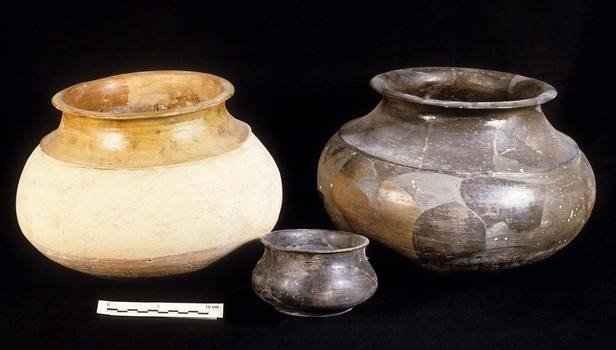A New Research on Catering of People in Harappan Civilization
12 Dec 2020 ( IBTN Education Network )
A recent research has reported that the people of the Harappan civilization were largely carnivorous. They used to eat meat of cow, buffalo and goat. Pottery and catering methods found in the Harappan civilization are the basis of this research.
A PhD in archeology from Cambridge University and now a post-doctoral fellow in France, A. Surya Narayana has researched the ways of catering for people during the Harappan civilization. His research is published in a journal called 'Archaeological Science'.
Although there have been many studies about the lifestyle of the people of the Harappan civilization, this research basically focuses on the crops grown in that region.
Overall, this research focuses on crops as well as on the pots used by cattle and people. Scientific investigations of these utensils reveal what the people of ancient India used to eat and drink in them.
Archaeologists are doing such studies all over the world. Similar research has been done on the pottery of the Harappan civilization.
Harappan Civilization Crops
Barley, wheat, rice as well as grapes, cucumbers, brinjals, turmeric, mustard, jute, cotton and sesame were also produced in the Harappan civilization.
Cows and buffaloes were the main cattle in animal husbandry. 50-60 percent remains of bones found in the area are from cow-buffalo while about 10 percent bones are of goats.
From this it can be inferred that beef and mutton would have been the favorite meat of the people.
The cow was reared for milk while the bull was reared for farming.
Although the bones of pigs have also been found in the excavation, but what work the pigs would have used is not yet clear. Some remaining deer and birds have also been found.
Rakhigarhi, the site of the Harappan civilization in Haryana, was selected for this research.
Pottery found from Alamgirpur, Masudpur, Lohari Ragho and some other places were also collected.
Samples were taken from these utensils and analysis by scientific method showed that animal flesh was eaten in them.
Research results
Research has shown that products made from milk, animal meat and vegetation were cooked in these utensils. There was no difference between the urban and rural areas of the Harappan civilization. Pottery was also used to serve some other purposes.
Then there were many animals in that area and the direct use of milk products in pots was comparatively less.
An earlier study in Gujarat showed that in many earthen pots, mainly dairy products were cooked. This research was published in Scientific Reports.
A PhD in Archeology from Cambridge University and now a post-doctoral fellow in France, A. Surya Narayana, says that the next phase of research will be to find out in a systematic way the catering practices in the backdrop of culture and climate change. Changes came.
Surya Narayan says that the remains of pottery will play an important role in finding these.
Surya Narayana also says that by analyzing the pottery found from archaeological sites in South Asian cities, we will be able to understand the diversity of food in prehistoric times in South Asia.
Surya Narayan has included some information about Harappan civilization in his research. In the prehistoric period, the Harappan civilization was geographically spread over areas of modern-day Pakistan, northwest India, south India and Afghanistan.
Plains, mountains, river valleys, deserts and seasides were an extension of the Harappan civilization in different areas. It consists of five main cities and several small populations, which date from 2600 BC to 1900 BC.
Necklaces, seals and weighing pieces are among the specialties of the Harappan civilization. There was a widespread practice of exchange of goods in transactions.
It cannot be said that in the Harappan civilization, the cities dominated the villages. The relationship of the two was mainly based on economic exchanges. The two were interdependent on each other.
After 2100 BC, the western parts of the Harappan civilization gradually emptied and the eastern parts developed.
In this era Harappan civilization had fewer cities, more villages.
There are many reasons for this, among which the bad monsoon is said to be the biggest reason. The situation remained the same for many centuries after 2150 BC.
(Click here for Android APP of IBTN. You can follow us on facebook and Twitter)
Share This News
About sharing



